Car seats are incredibly useful and essential additions to have when you are traveling with your child. These additional seats can use either their built-in harness to restrict your child’s movements or elevate your child so that the seat belt designed by car manufacturers for an adult’s body fits safely and adequately onto the child. The latter car seat is the booster seat, and it is called booster because as we have mentioned, it “boosts” your child’s height.
The National Highway Traffic Safety Administration recommends using a booster seat if your child has outgrown his/her harness seat. According to CuteLittleDarling, the best car seat for 6-year-old (harness seats or boosters), or for any age should be easy to install (to guarantee safety), gives the proper harness/belt fit to the child’s body, can transition to another car seat stage (so that you can use it longer), and has adjustable harness height (for harness seats) to accommodate growing children.
You can also choose a car seat that has an adjustable width and height to keep your child safe and comfortable. These are useful factors to consider since kids grow up fast. However, this is just an example of how height and weight requirements influence the accuracy of protection a car seat can provide since car seat manufacturers base their units’ design on them. More than height and weight requirements, there are a lot of factors that we have to tackle as well, especially when you think your child is ready for a booster seat.
When transitioning your child to a booster seat, ask yourself if he/she is mature enough both in physical and behavioral aspects for a booster seat. Always remember that compared to a harness seat, a booster seat gives the child more freedom in movement. This lessened body movement restriction means that you should meticulously check every detail that goes from measurement requirements, attaching the booster seat onto your car, and to the seat belt fit of your child.
Contents
Car Seat Stages
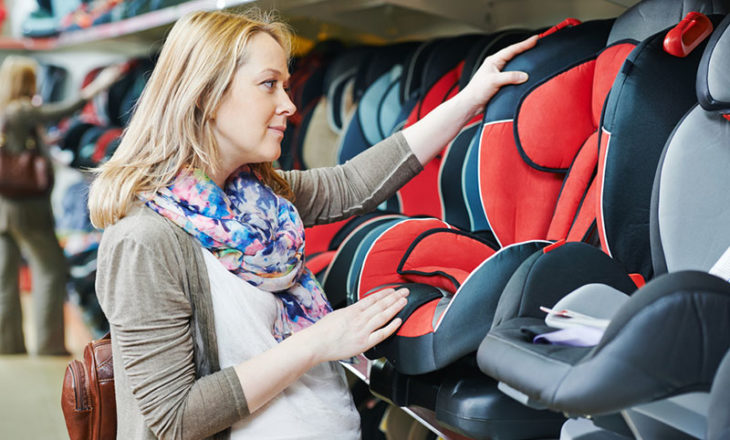
Source: Shutterstock
Before we discuss the booster transition checklist, you should first be informed about the car seat stages that your child has to use until he/she can use the car seat belt on its own. It is important that you become knowledgeable with these stages so that you have a grasp on what is proper for different age groups.
The NHTSA has provided the following recommended ages for each car seat, but please keep in mind that the most useful marker to know if you can transition your child to the next car seat stage is when he/she has outgrown the previous seat.
Rear-facing Car Seat (Birth to 3 Years Old)
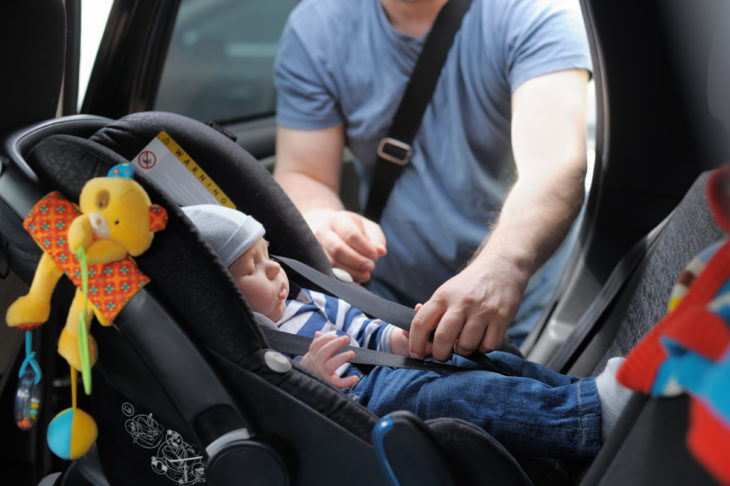
Source: AdobeStock
A rear-facing car seat is the first seat that you will use for your child when he/she starts riding the car with you. This seat looks like a baby carrier that you attach to your vehicle using your vehicle’s seat belt or its own latch system. It secures the child using its own harness.
Forward-facing Car Seat (1 to 7 Years Old)
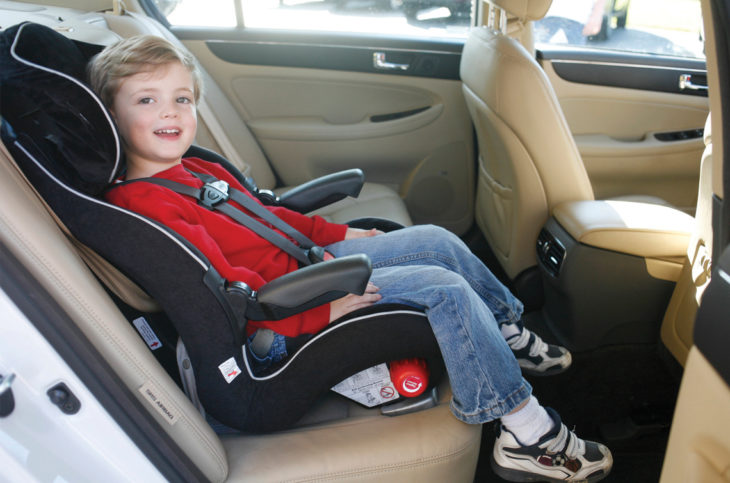
Source: Pinterest
Similar to the rear-facing car seat, you can use the vehicle’s seat belt or its own latch system to attach this seat onto your car. It also restrains the child using its own harness.
The five-point harness is your best harness style for a forward-facing car seat because it effectively restricts movement and distributes the force of impact on the child’s body. Its five points are the shoulders (2), hips (2), and crotch.
Booster Seat (4 to 12 Years Old)
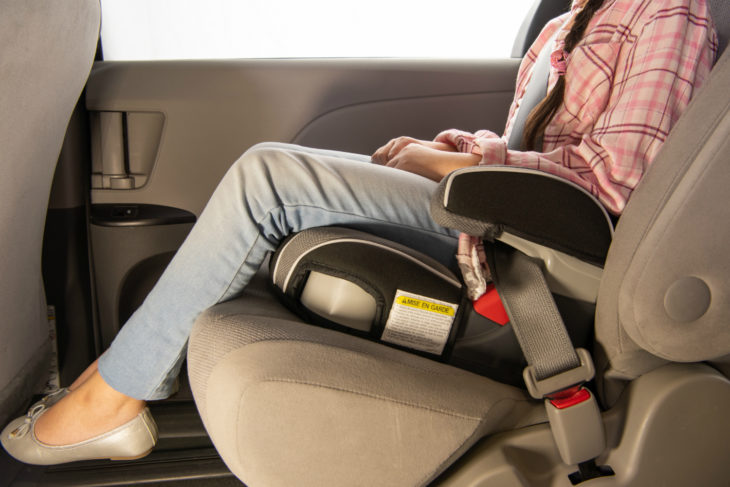
Source: Pinterest
Compared to the prior harness seats, a booster seat uses your vehicle’s seat belt to secure your child. There are also two kinds of booster seats called the high back booster and the backless booster. Because it provides additional head and neck support, the high back booster ensures that your child is sitting with a proper posture even if he/she is sleeping. However, the backless booster is the ideal choice for parents who commute with their child as it is less bulky compared to the high back type.
Booster Transition Checklist
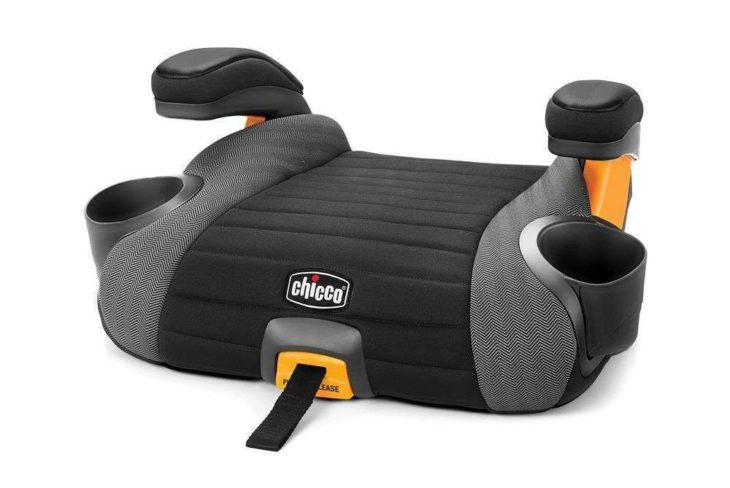
Source: Pinterest
The NHTSA says children who are at least 4 to 12 years old can start using a booster seat. They should also be weighing at least 40 pounds. However, besides your child’s age and weight, there are two other questions that you have to ask yourself.
Has Your Child Outgrown His/Her Harness Seat?
The best marker to know that it is time to move your child into a booster seat is if he/she has outgrown his/her harness seat. You could tell that your child has outgrown the seat if his/her shoulders already reach the top of the seat harness slots and the top of his/her ears are at the same level with the top of the seat.
Is Your Child Mature Enough for a Booster Seat?
This question might confuse you, but besides physical maturity, your child must also be mature when it comes to his/her behavior. Since the booster seat has fewer contact points compared to a harness seat, he/she will have a bit more freedom in moving.
Children who like to slouch down, lean in different directions, play with the belt, and reach things with his/her hands would be safer to stay in a harness seat that can accommodate his height and weight. The lessened restriction that kids get in a booster seat can predispose them to get distracted with other things and go out of the proper sitting posture.
The bottom line is there is no exact age to declare when your child is capable of properly behaving in a booster seat. Each child has a unique personality. Therefore, it is safer to observe him/her longer before using a booster.
If you’re thinking of using a backless booster seat for your child, make sure that he/she can sit upright on his/her own. Backless boosters are also more ideal for vehicles that have high seat backs so that the child still has a head and neck support.
How Car Seats Work
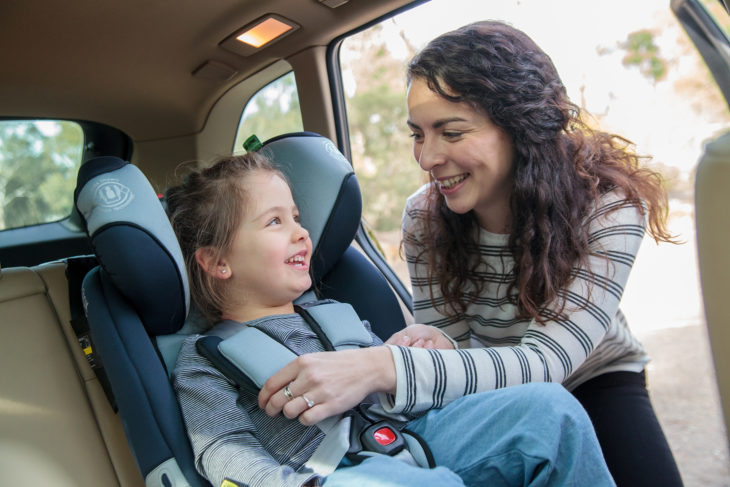
Source: Pinterest
As we have mentioned earlier, the primary purpose of a car seat is to properly hold your child using its harness (or your vehicle’s seat belt) to prevent him/her from propelling off the seat in case of an impact. Both harness seats and boosters also provide the correct restraints on a child so that the force of the impact during an accident gets properly distributed across the pelvis and rib cage (strong bones.) In other words, boosters make seat belts as effective to children as they are to adults, while harness seats act as the child’s seat belts.
But for car seats to work effectively and safely, you should always follow the seat’s guidelines and never transition your child too early on the next car seat stage.
Car Seat Reminders
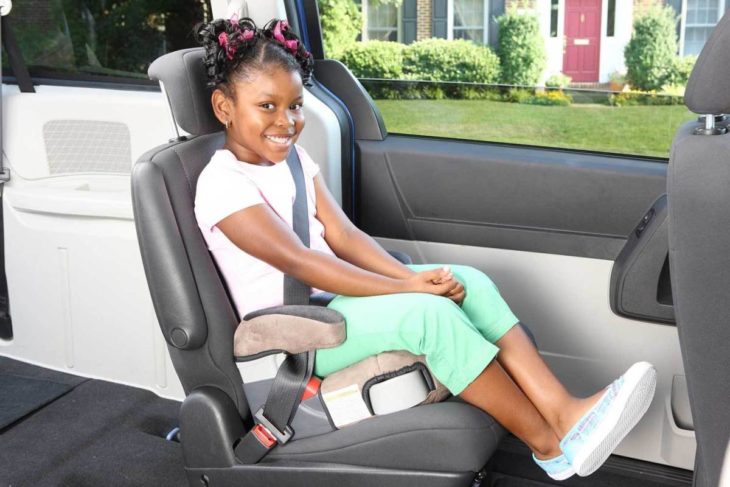
Source: Pinterest
The Centers for Disease Control And Prevention (CDC) recommends that children younger than 13 years should always sit on the back seat. The reason for this is because the pressure from the inflating airbags on the front passenger side can hurt them or cause them to propel towards hard places in the car.
You should also never neglect reading your car seat model guidelines to make sure you have properly secured it into your vehicle. It should be stable, and the harness or seat belt is on the correct positions on your child’s body.
For a rear-facing seat, the harness straps should go below the child’s shoulder. In contrast, the harness straps should go above the child’s shoulder in a forward-facing seat.
Proper Seat Belt Fit
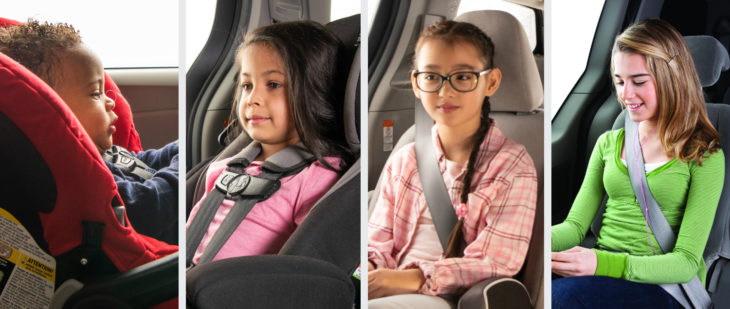
Source: Pinterest
The shoulder portion of the seat belt should cross the middle of the child’s shoulder and chest, while the lap portion of the belt should sit comfortably on the child’s upper thighs. You should also never see any twists throughout the belt.
Bonus Question: Is My Child Ready for a Seat Belt?
As we have mentioned over and over throughout this article, there is no need to rush your child to use any car seat stage. However, if you think your child is ready to lose his/her booster seat, make sure that your child has met all of these requirements:
- He/she can sit upright throughout the trip, even during sleep.
- The shoulder portion of the belt isn’t rubbing on his/her neck.
- The lap portion of the belt sits snugly on top of his/her thighs and not on his/her stomach.
- Your child’s knees are bending comfortably at the edge of the vehicle’s seat during sitting.
- Your child can sit with his/her back against the seat.
- Your child can maintain all of these requirements for the whole car ride.
Overall, having a car seat and restraining your child’s movements are incredibly effective in reducing the risk of fatality during an accident. For these seats to perform their best, it is up to you to ensure that your child is using the proper car seat stage for him/her and is meeting all the requirements by the seat model.
Lastly, you should always check every attachments, fittings, and lock, before driving out with your child.
